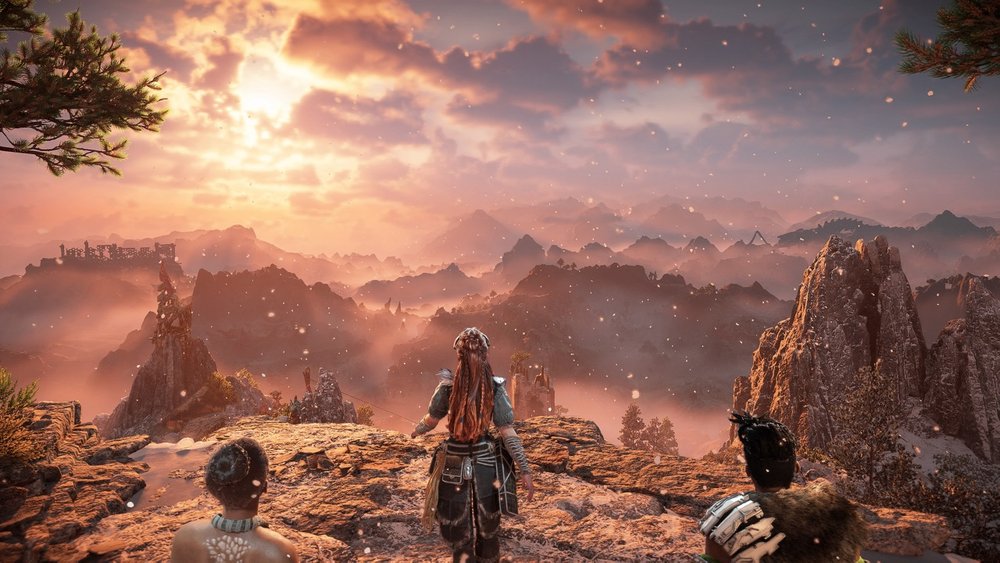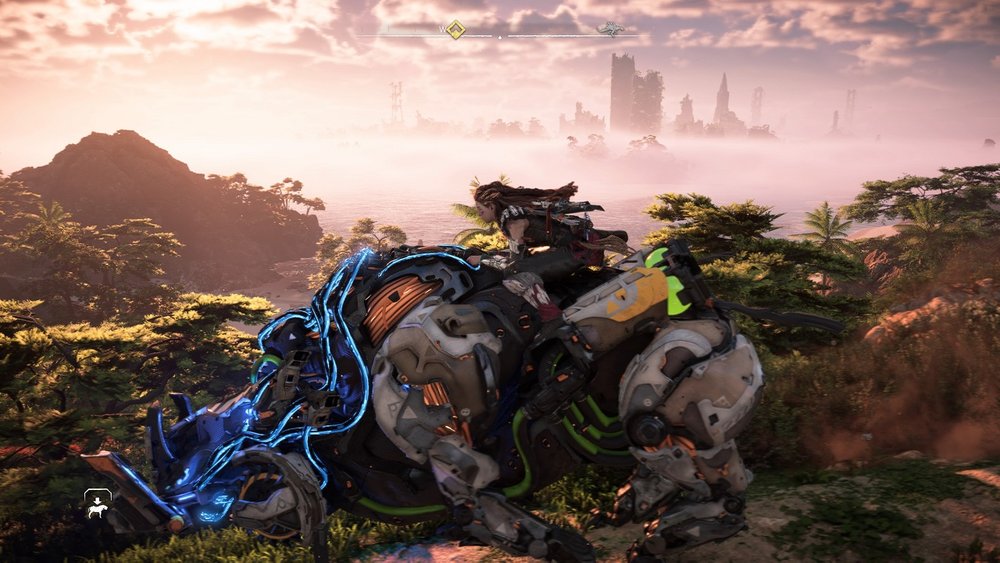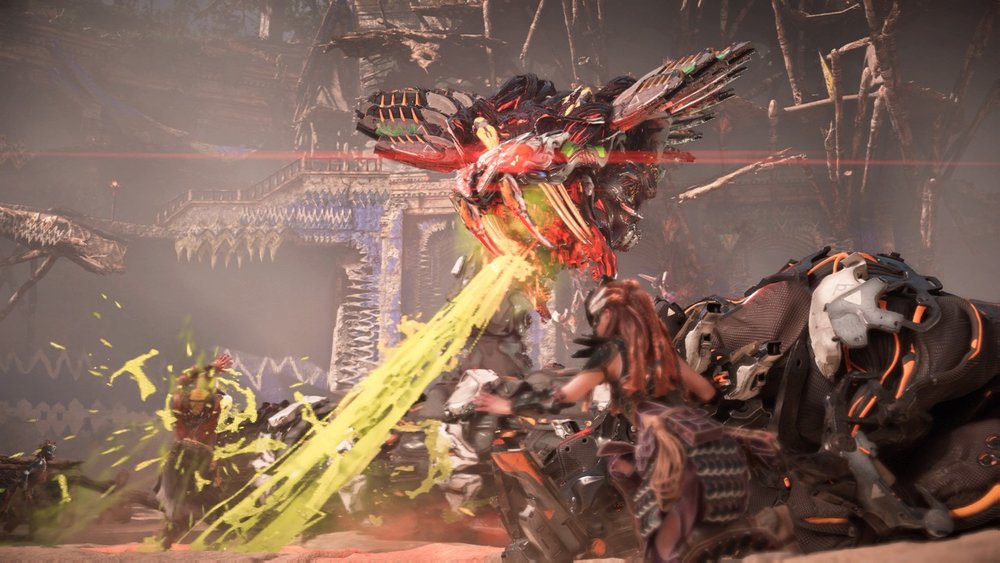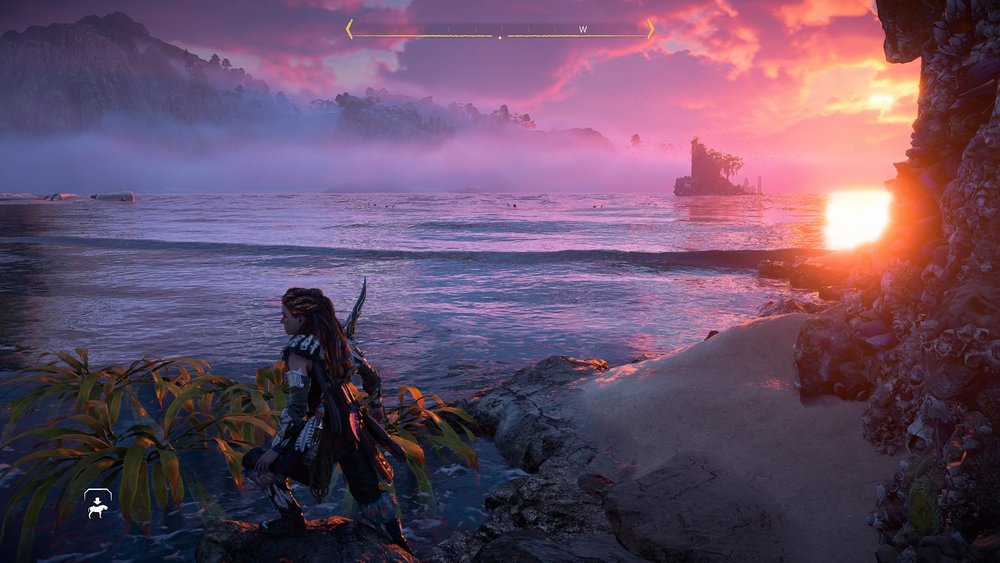Horizon Forbidden West review – it’s a good time in the wild west


When Horizon Zero Dawn was released back in 2017, it really turned heads, as it was an inviting new world where beast-like machines roamed the earth and humans had reset to a tribal society. The combat was thrilling, the open world was packed with activities, and there were well-written characters fit to guide you through this epic tale of discovery and wonder. My sentiments on the first game can be echoed for its sequel, Horizon Forbidden West. This is a sequel that gives you more of what you loved from the first game, expanding what works and continuing where everything left off. While there were a few setbacks, I couldn’t help but take in everything this game had to offer.
 Horizon Zero Dawn: Aloy’s Continuing Adventures
Horizon Zero Dawn: Aloy’s Continuing Adventures
Horizon Forbidden West starts 6 months after the first game ended, as Aloy continues her search for more answers. The world is slowly dying, and her search leads her heading to the Forbidden West. This new journey sits atop what the first game had built, and I can’t stress enough that the narrative can only be truly appreciated if you’ve played the first game. There’s a good amount of returning characters and throwbacks, so even with the game’s recap video and further cutscene explanations, I felt that it wasn’t enough to cover the details and get someone up to speed.
Aloy still remains a likable protagonist, and while only a few months have passed, she seems more eager, focused, stubborn, even – as she soldiers on despite the many risks. Some folks she befriended in the first game – and new ones met in the Forbidden West – eventually join Aloy on her journey, and soon enough the tale becomes a collective effort between a series of characters taking on this looming threat. This results in your having a hub of sorts, a home base where Aloy can return after completing a main quest. This is where she can gather her thoughts on the current situation and interact with the many characters now along for the ride.

I find this structure more compelling, as you get to hear multiple perspectives about each vital point in the main narrative. We then get to learn more about each character, as these optional conversations are filled with interesting and entertaining information about various things in the world of Horizon Forbidden West. It felt like a treat to return from a main quest and find an exclamation point icon hovering over a character’s head, informing me that there’s new interactions available to spark.
The story of Horizon Forbidden West takes its time. It starts slow, but ramps up nicely, hooking you in, and you’re given the option to take on main quests in your own time. Guerilla Games delivered a solid main story that remained consistent all throughout the game…until you reach its final act, that is. The game fell flat towards its grand finale, as it failed to provide a satisfying conclusion towards all that had been built up, and the problem stems from the game’s antagonists. Without spoiling much, most of them didn’t feel fleshed out, especially after being teased for so long. They felt shallow compared to the rest of the cast, and it greatly impacted the final moments of the game. It was anticlimactic – fireworks that fizzled out mid-way through, if you will. It’s sad, because everything before was just a joy, and this includes most of the game’s sidequests.
You have your occasional fetch quests, hunter challenges, a mini board game, and other activities meant to fill the world, but most of the time you’re given sidequests that are thought out and meaningful – stuff like Aloy helping a village that was wiped out by a mudslide, settling a feud between a tribe’s chief and its leaders, and even assisting a good friend that you met in the first game. Some are even left on hold, forcing you to progress before you can fully complete the sidequest. To top it off, the rewards attached to these quests further justify the time spent on them.
Horizon Forbidden West loves to keep you distracted every chance it gets, despite Aloy’s mission being time-sensitive. Every main mission is a long trek through the game’s map, and going there always results in you finding a rebel camp nearby, a village filled with quests and activities, or just a skirmish that breaks out between man and machine. It always felt like I did 3-4 other things before finally reaching the main quest’s location. Sure, you can choose to ignore all of it, but as the game’s side activities always hit the right tunes, I was eager to do another, then another.
 Gameplay and progression – Evolution, not revolution
Gameplay and progression – Evolution, not revolution
The reason for my overall satisfaction with the gameplay boils down to the game’s exhilarating combat, which remains mostly the same if you’ve played Horizon Zero Dawn. The only major difference here is that there are more options in Aloy’s arsenal, like the exploding javelins, or the Shredder Gauntlet that fires a spinning projectile that returns to you, rewarding the player with an explosive finish if you happen to catch it three times in a row. You now even have Valor Surges, special abilities that serve as your trump card if things get dicey.
Traversal has improved, in the form of more tools that help Aloy climb. She now has a grappling hook, useful to pull her towards certain terrain or pull off debris blocking your path. She even gets a broken shield repurposed as a glider so she can safely float down from tall heights. Climbing is no longer limited to whatever is painted with yellow coloring, as you can climb most of the rocky terrain to reach certain destinations.
Character progression when leveling Aloy is similar, just expanded from four trees to six, and they deliver a variety of weapon-specific skills and upgrades that can complement different playstyles. Upgrading your gear is more complex now, as players will have to use resources found in the wild to upgrade their weapons and armor, increase their stats, unlock perks, and unlock more mod slots for added customization.
There’s a lot to think about when deciding what to bring and when to upgrade, because resources – despite my picking up everything not chained to the floor – never seem to be enough to keep everything well-stocked and updated, and I appreciated the need to think about where I should pool my resources.
Just like combat and progression, the roster of beast-like machines you face has also expanded. Some familiar faces return, but with different machine variants, and new ones bring something fresh to the table, such as the turtle-like Shellsnapper (with its annoying burrow and projectile attacks) or the dinosaur-like Slaughterspine, deadlier than the first game’s Thunderjaw. I count over 40 machines in this game, and each provides a rather interesting encounter, as I was constantly switching weapons, finding the right ammo to expose their weaknesses, and sorting out which of their parts to break.
 Blinded by the light – a little too much for the eyes
Blinded by the light – a little too much for the eyes
Forbidden West’s map is massive, as Aloy explores different biomes, from the desert ruins of Las Vegas to the lush coastal beaches of a lost San Francisco. Thick foggy forests, snowy mountains, underground water caverns, I could go on – the game is brimming with different environments expressed with an aggressive lighting system that brings out the best of every locale in the game. Well, not always – by aggressive, I mean that it can get too bright in certain areas, such as when climbing one of the tallest mountains, or fighting machines in an open field. Most of the time it works for the better, but you’ll see occasional overexposed tableaus that can be too much for the eyes.
When it’s not being too overexposed, each area looks fantastic, even on Performance mode with 1080P running at 60 FPS. You get a slight bump in detail if you pick Graphics mode for 4K support, but I find that not worth it, as it caps the FPS to 30.
Forbidden West is one of those games where you find yourself stopping every now and then to take a screenshot of the view. Sadly, the Photo Mode in this game wasn’t on par with other PlayStation exclusives with similar features, as I found issues such as blurry detail on fixed poses for Aloy, to the day and night cycle slider being completely off during certain shots. I’m not a veteran in maximizing the use of Photo Mode, but I didn’t think it would give me any frustration.
Character detail is slightly improved in Forbidden West as compared to Horizon Zero Dawn, as there’s more details in faces and armor. Cutscenes or any form of dialogue showcase Forbidden West’s facial animations, which sell characters’ expressions, bringing out unique mannerisms, and complementing each little detail. The only inconsistent element is the eye tracking, which sometimes gives the impression that the character on screen isn’t facing directly at the character in front of him/her.
 Performance – smooth sailing
Performance – smooth sailing
Considering how big Horizon Forbidden West is and the many details it tries to deliver in its environments and combat, this game performed smoothly 98% of the time over 40 hours of gameplay. In terms of framerate, my human eyes didn’t see a sudden drop of FPS when playing in either performance or graphics mode, especially during heavy combat scenes with so much going on. I did get the occasional crashes, which mostly happened when I tried to quit the game through its menu screen. The game crashed on me in one major scene, but that’s about it.
There are bugs, but they’re surprisingly minimal for a game this size – weird uneven lighting during underwater segments, armor pieces popping in and out, a machine disappearing, then suddenly appearing behind Aloy – nothing consistent, but they’re definitely there. I did witness the need to reload the game because of an NPC not working as intended. I wasn’t plagued with broken encounters or activities I couldn’t do because of a bug. This is a polished game inside and out, and I was informed that a day one patch is planned to address various issues, so the game could perform better on launch day.
Guerilla Games has delivered a worthy sequel for fans that enjoyed Aloy’s first adventure. While it doesn’t break the mold of the action-adventure open-world genre, it further enriches its blend of entertaining combat within a unique world that still stands out among other post-apocalyptic offerings. I was hooked into this world and felt captivated towards seeing how everything would unfold. They might not have stuck the landing very well, but that wasn’t enough to completely stain the complete experience, and I’m eager to take in more of what this world has to offer.
9/10
PROS
-
Combat is enhanced and is as exhilarating as the first game
-
Jaw-dropping environments
-
You’ll be in love with Aloy’s company of friends
-
A compelling world that rewards those who love to explore
CONS
-
Poor final act and antagonists
-
A few bugs such as weird eye tracking and uneven lighting could be a distraction for some players
What I’ve Played
-
Played over 40 hours
-
Finished the main story with a game completion of 43.91%
-
Did all activities available at least once
-
Reached level 45
[This review is based on a PS5 review code provided by PlayStation Asia]

